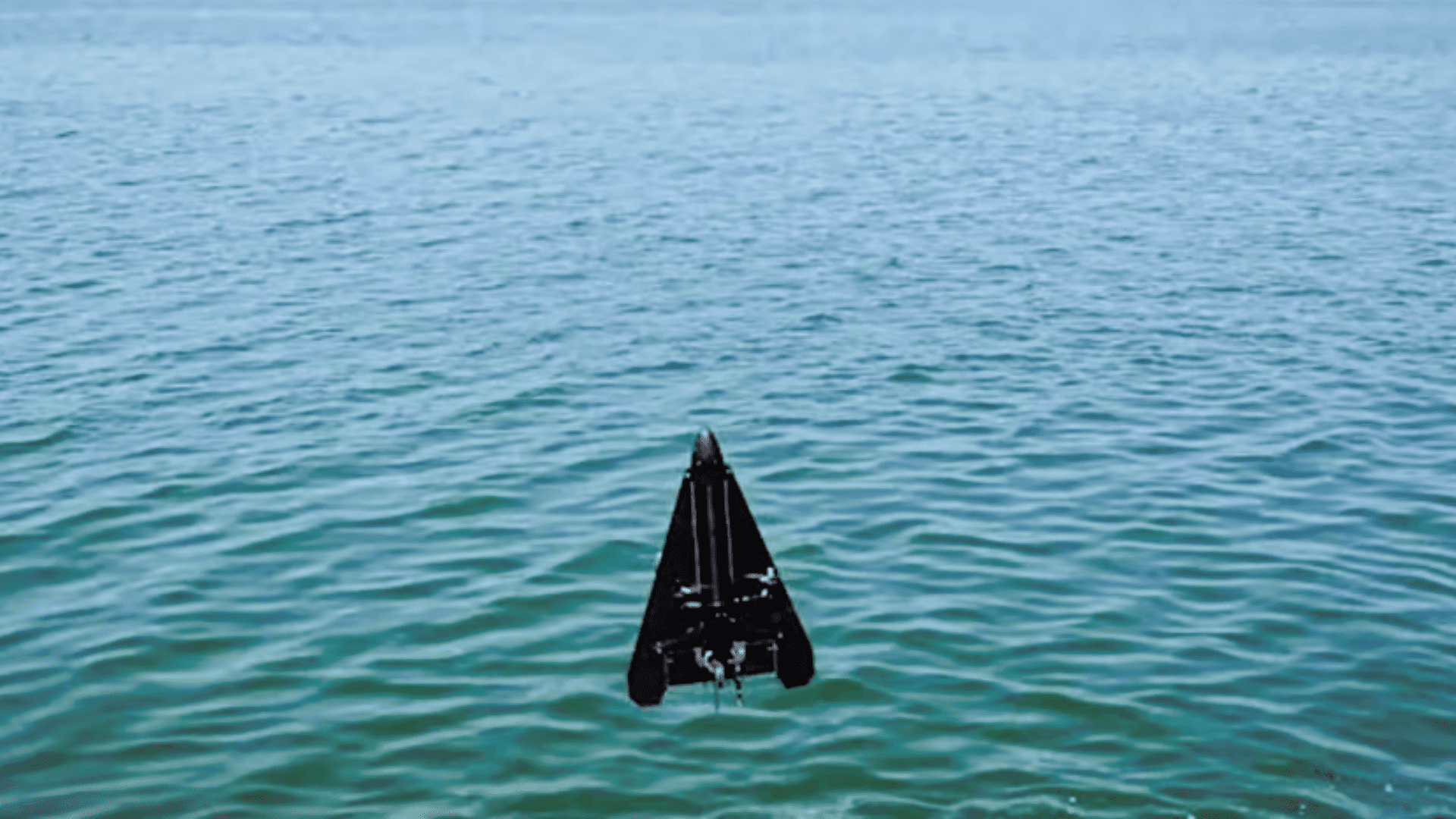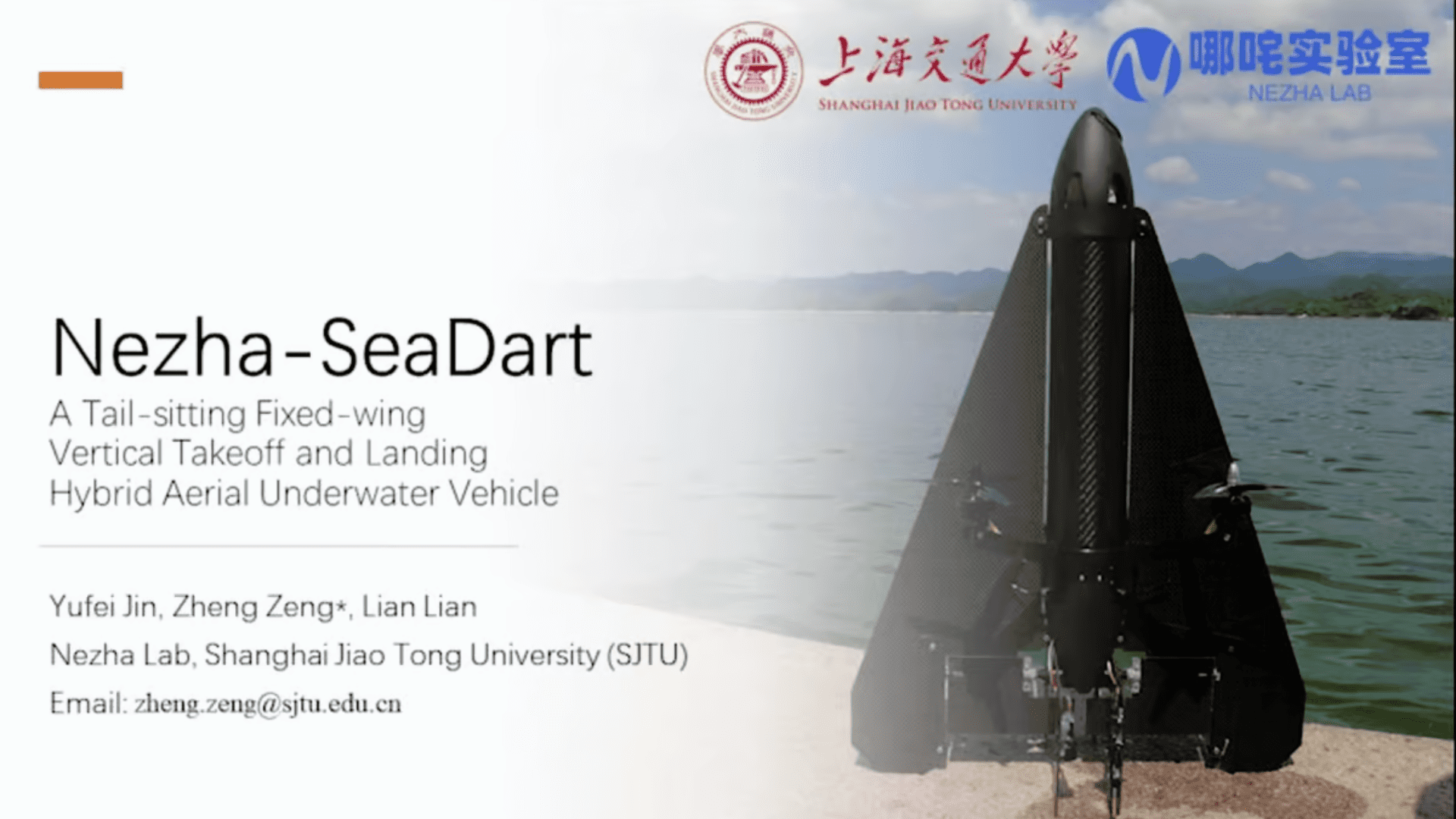Researchers from Shanghai Jiao Tong University (SJTU) unveiled an amphibious vehicle that hovers like a drone, takes flight, and dives in the water at high speeds. This never-before-seen machine is called the Nezha-SeaDart.
SeaDart

The name Nezha refers to a deity common among folk religions. According to the lore, he was famous for his great strength, bravery, and skill in using magical weapons. The vehicle that bears his name is a HAUV or hybrid aerial underwater vehicle. According to the researchers who developed the Nezha-SeaDart, it is a tail-sitting, electric Vertical Take-Off and Landing (eVTOL) craft.
However, the aircraft is more than an eVOTL because of its capabilities on land and sea. It can dive at high speed into water, then pop back out to continue its flight. For example, it can plunge into the water to perform tasks underwater before coming out and taking a winged flight without missing a beat.
While some seaplanes and helicopters land and take off from the water, there isn’t anything like this. No such vehicle dives into the water and survives to take flight from beneath the water’s surface. In addition, the Nezha SeaDart’s design is unique. It’s equipped with four propellers for flight and eight underwater thrusters. Additionally, it uses a combination of aerial propellers and thrusters for autonomous underwater navigation.
Deploying the Nezha-SeaDart

The Nezha-SeaDart was recently tested for ten days in China’s Thousand Islands Lake of Zhejiang Province. Researchers wanted to prove its ability to seamlessly cross between land, sea, and air.
According to New Atlas, this isn’t the first time China has shown off its “land, air and sea” capabilities. Before the SeaDart, there was the Nezha-IV. This machine could operate as deep as 164 ft in deep sea conditions. It could hover in the air for 15 minutes and had a 4.35-mile range flying at 22.4 mph. While there are cheap remote-controlled knockoffs capable of flying and zipping around as a boat, none have full autonomy and submersibility, reportedly.
Some uses for unmanned drones include marine research, search and rescue, and even marine exploration. However, whether the Nezha-SeaDart is for military or commercial use is unknown.







